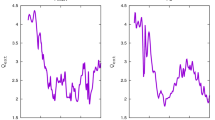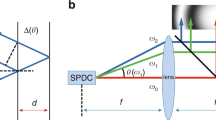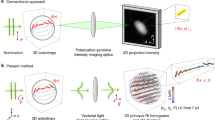Abstract
THE compensation method of obtaining the birefringence of an object seen in a polarizing microscope requires the evaluation of the optical path-difference produced by a known thickness. In elongated objects of irregular cross-sectional shape, for example, silk and viscose rayon filaments and fibres or filaments containing cavities, the thickness at a given point of compensation within the object cannot readily be determined1,2. The purpose of this communication is to describe a technique that has overcome this difficulty.
This is a preview of subscription content, access via your institution
Access options
Subscribe to this journal
Receive 51 print issues and online access
$199.00 per year
only $3.90 per issue
Buy this article
- Purchase on Springer Link
- Instant access to full article PDF
Prices may be subject to local taxes which are calculated during checkout
Similar content being viewed by others
References
Frey-Wyssling, A., “Submicroscopic Morphology of Protoplasm”, 334, English edit. (Elsevier, 1955).
Heyn, A. N. J., “Fibre Microscopy”, 335 (Interscience Pub. Inc., New York, 1954).
Hough, J. M., and Goldsmith, B. J., Nature, 172, 1105 (1953).
Brown, D. S., Nature, 173, 443 (1954).
Author information
Authors and Affiliations
Rights and permissions
About this article
Cite this article
SIMMENS, S. Birefringence Determination in Objects of Irregular Cross-sectional Shape and Constant Weight per Unit Length. Nature 181, 1260–1261 (1958). https://doi.org/10.1038/1811260b0
Issue Date:
DOI: https://doi.org/10.1038/1811260b0
Comments
By submitting a comment you agree to abide by our Terms and Community Guidelines. If you find something abusive or that does not comply with our terms or guidelines please flag it as inappropriate.



